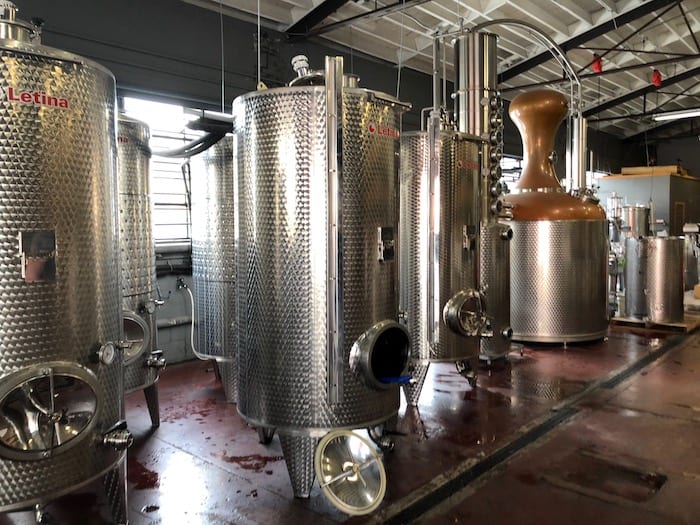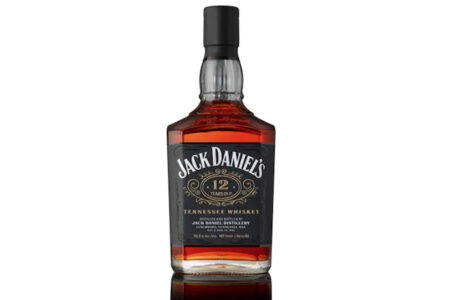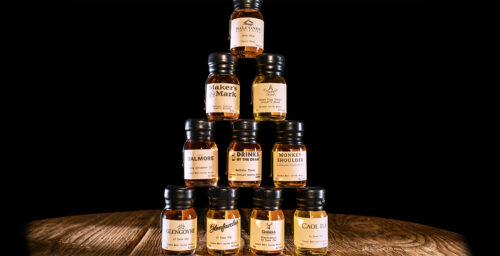When I hear more complicated whisky-related terms like ‘aldehydes’ being thrown around, whether it’s in the context of a seminar or embedded in a distiller’s notes, my first thought is ‘who within the target audience actually knows what that term means?’
In my ongoing pursuit of a greater understanding of whisky as a sensory interface, I find it difficult to thoroughly relate to a reference of this kind unless I have at least a basic grasp of its chemical properties, the circumstances of its presence in the whisky in question, and its net effect on my perception of said whisky.
So, what exactly is an ‘aldehyde’?
Well, to begin with, aldehydes are organic compounds with the chemical structure -CHO. Going back to our discussion on ‘esters’, the chemical structure of aldehydes isn’t too dissimilar to that of carboxylic acids, the critical building blocks of ester formation.

An aldehyde is formed by a carbon atom double bonded to an oxygen atom, single bonded to a hydrogen atom, and single bonded to (in the case of whisky) an ‘alkyl group’ (R). By contrast, carboxylic acid is formed by a carbon atom double bonded to an oxygen atom and single bonded to a ‘hydroxyl group’ (a hydrogen atom bound to an oxygen atom) and an alkyl group (R). It is represented as -COOH.
Aldehydes are produced throughout the whisky making process, including in the fermentation, distillation and maturation phases. Aldehydes form through the partial oxidation of alcohol. When aldehydes oxidize further, carboxylic acids are formed. Both carboxylic acids and aldehydes are formed by the oxidation of ‘primary alcohols’, a group which includes ethanol, methanol, and isoamyl alcohol (a fusel oil congener). The oxidation of ‘secondary alcohols’ like isopropanol, is responsible for the formation of ‘ketones’, which will be explored in a future column.
Aldehydes are critical to both the flavor and aromatic content of whisky. Aldehydes vary in aromatic presence depending on molecular weight. Aldehydes of lower molecular weight tend to have sharp and unpleasant odors associated with them. Acetaldehyde, formed through the oxidation of ethanol, is dominant during fermentation (contributing to the harsh aromatic reality of the inside of an active washback), and lends a young whisky its aromatic sharpness.
Aldehydes of higher molecular weight can have very pleasant aromas, and are frequently used in the production of perfumes and essential oils.
Furfural is an important aldehyde for whisky aromatics, producing pleasant almond and biscuit aromas. Furfural tends to be present in much higher concentrations in malt whisky than in grain whisky, and was mentioned as far back as 1905 (in the excise periodical Revenue Review) as a reliable indicator of malt whisky’s authenticity.
Phenolic aldehydes like vanillin and cinnamaldehyde, derived from the alcoholic hydrolysis of heat degraded oak lignin during cask maturation, drive those cinnamon and vanilla aromatics and flavor characteristics fundamentally important to whisky.
With all this talk of aldehydes, I would be remiss if I neglected to point out that acetaldehyde in particular has been identified as a major contributor to hangovers. Acetaldehyde is a toxin, and an elevated acetaldehyde level in the bloodstream have been linked to the symptoms of ‘general misery’ associated with hangovers.
Two enzymes in the liver are chiefly responsible for metabolizing acetaldehyde effectively. The first, ADH (alcohol dehydrogenase), converts ethanol to acetaldehyde. Then the second, ALDH (aldehyde dehydrogenase), converts acetaldehyde to acetate, a less toxic compound that is eventually broken down into carbon dioxide and water.
The trouble is that this process takes time. During that time, misery is the likely result. Certain groups have the added complication of either a mutated version of ALDH in their livers or are completely lacking in that enzyme altogether. In these cases, symptoms tend to include a characteristic facial flush along with nausea, drowsiness, and generally a much more severe hangover
As a service to the reader, research indicates that taking the dietary supplement amino acid L-Cysteine before consuming alcohol can help lower acetaldehyde levels in the body. If it’s too late and the damage has been done, the consumption of soft drinks like Sprite, or other beverages containing Taurine has been shown to reduce acetaldehyde concentration in the system.







